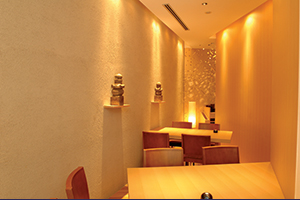 If you expect this creator of breathtaking aesthetic spaces to be coiffed in the same sensibility as his works, you will be in for a surprise. Takashi Sugimoto has little regard for superficial appearances. No matter who he is meeting with, he dresses in the same casual manner. He wears Birkenstocks with socks, a charcoal gray polo shirt, and his wallet is secured in the back pocket of his well-worn Levi’s. An avid chain smoker, Sugimoto is rarely without a cigarette. He is polite, yet not extroverted. His long-time friend, architect Tadao Ando describes him as having “a friendly innocence mixed with a stubborn refusal to accept the opinion of others.”
If you expect this creator of breathtaking aesthetic spaces to be coiffed in the same sensibility as his works, you will be in for a surprise. Takashi Sugimoto has little regard for superficial appearances. No matter who he is meeting with, he dresses in the same casual manner. He wears Birkenstocks with socks, a charcoal gray polo shirt, and his wallet is secured in the back pocket of his well-worn Levi’s. An avid chain smoker, Sugimoto is rarely without a cigarette. He is polite, yet not extroverted. His long-time friend, architect Tadao Ando describes him as having “a friendly innocence mixed with a stubborn refusal to accept the opinion of others.”
Indeed, when Sugimoto laughs, he chuckles with boyish delight, but when he begins defining his concepts of cultures and ideas, Sugimoto changes gears and is intense, intellectual and lectures at length citing specific dates and events to support his views. In an eclectic private room of his nCommercial interior designer Takashi Sugimoto is not a household name, yet if you go over his impressive portfolio, you’ll realize just what an important figure he is. Sugimoto’s contribution goes beyond dictating contemporary design, but is integral to defining culture within and outside Japan. Sugimoto has created some of the most remarkable restaurants, bars and hotels in the world. Besides running his design firm, Super Potato, Sugimoto also teaches at the Musashino Art University. He has won numerous prizes including the prestigious Mainichi Design Award.
In 2005, Sugimoto became the first Japanese designer to be responsible for the entire design of a major luxury hotel when he took on the Park Hyatt in Seoul. He is currently putting the final touches to his latest creation in Shanghai where he designed the entire interior of a super luxury hotel by the Dubai-based Jumeirah International chain of hotels. To be completed in December, he describes the design as “contemporary with Asian motifs.” Sugimoto gained the honor to design hotels by first creating some of the most memorable hotel restaurants and bars from Singapore to Las Vegas.
It is no coincidence that Sugimoto specializes in the creation of restaurants, bars and hotels because he is a firm believer in the importance of hospitality. Sugimoto himself is the quintessential host. Lucky visitors to his private oasis in Atami are first invited to take a hot bath in a tub carved from a slate of aji granite. Then they are treated to a tea ceremony in a room meticulously designed by Sugimoto before they are fed locally caught fish and vegetables grown nearby.
Sugimoto feels “omotenashi” is more than a social gesture but is a cultural art as exemplified by “sado,” the Japanese tea ceremony, of which he is an avid practitioner. “Tea is more about expressing a spirit more than how well it is made. This is true of creative work. It’s not a matter of technique. It’s a matter of knowing what is important.”
For Sugimoto, what is important about designing commercial interiors is the ability of a space to promote communication. “People can always buy fine ingredients and make delicious meals at home that cater specifically to their preference. Restaurants have to provide more than good food. People go to restaurants for stimulation and communication that they cannot get staying at home,” says Sugimoto. (See sidebar for more on Sugimoto’s philosophy on food culture.)
Sugimoto is also an advocate of bar culture as another forum for communication. He pronounces the izakaya as a most profound and important development in Japan’s postwar history. He points to the year Meiji 32 as a pivotal one as it was the year when the Mitsukoshi department store first opened and Japan’s farming population dropped below 50 percent. It marked the inevitable trend of people becoming salaried workers in the cities and beginning to have access to disposable income. “For the former country folks, gathering at an izakaya after work to relax and socialize served an important social function. It served as an urban substitute for the communal socialization that was central to the farming population,” Sugimoto explains. At his Shunju restaurants and in the bars he designs, the purpose is for the patrons to communicate as if they were in an izakaya.
Internationally, Sugimoto points out that bar culture in England and in the Netherlands is also deeply imbedded in the hearts of the locals. “Wonderful projects have had their beginnings over pints in pubs in rural England,” he comments. When he opened a Japanese style bar in London, he paid homage to Japanese pub culture by creating a shochu bar, the cheap alcohol beverage made from potatoes favored by the working class at izakayas.
In contrast, he points out that in a city like Seoul, such venues for communication are not as developed. So when he designed the Timber House in Park Hyatt Seoul, he wanted to create a “heart-stirring bar where mature men and women can drink in comfort.” Divided into several distinct areas, some parts of the bar are as cozy as someone’s living room, while others boast a live stage and a proper bar counter. “Seoul has grown so much recently, it’s easy to forget that just two decades ago it was just beginning its rapid industrialization. Now it’s time for art and ideas to blossom.”ewest restaurant, Shunju Yurari, he elaborates on what he considers important today. One of Sugimoto’s early projects that propelled him to the front of Japan’s art scene was the design of a bar called Radio in 1971. Sugimoto wanted his space to communicate a message of both the importance of honoring Japanese traditions in design as well as incorporating new influences from around the world. He did this by choosing a thick slab of cherry wood, knotted and cracked, to be the bar counter. Beauty within imperfection is a Zen concept that, as a sado master, Sugimoto is attuned to. To contrast with tradition, the walls of Radio are covered in rusted iron – a brand new material in interiors at the time. A small space in Harajuku consisting only of nine bar stools, Radio soon became the haunt of Tokyo’s top designers and artists and catapulted Sugimoto to the ranks of a designer to be reckoned with.
Sugimoto’s reputation as one of Japan’s cutting-edge designers earned him a nod for Seiji Tsutsumi of Seibu Department Store for the creation of a brand new concept in consumption, living and style that became known as Muji. Translated as “no-name brand,” Mujirushi Ryohin would become the trendiest name in generic brands. Sugimoto was called on along with legendary graphic designer Ikko Tanaka and the influential creative director Kazuko Koike to start up this brand. “In the beginning, there were only a few of us, so we took part in all aspects of the business,” Sugimoto reminisces with fondness. “Seiji Tsutsumi was a visionary and had a most creative group of merchandisers who bought cheap burlap from the United States and natural cotton in hues of yellow and orange from South America. From these raw, exotic, cheap materials, Muji goods were created. It was exciting because in the early 1980s, no one did things like that.”
“Ikko Tanaka came up with the name and it’s simply brilliant because the potentials are limitless. You can have Muji travel, Muji sports,” explains Sugimoto. “Muji’s succinct design reveals a Japanese aesthetic which values sustaining simplicity by completely discarding all worthless decoration.”
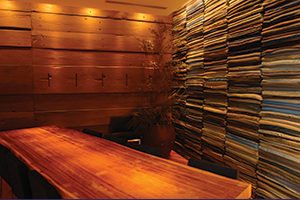 It was a lifestyle design concept that matched the sentiments of the time. Japan was experiencing its first oil shock. Prices rose and consumer spending had to be curbed. Muji was a new retail concept selling high quality goods at affordable prices. It was not just a boutique or supermarket, so when Sugimoto designed its first shop in Aoyama, he used the image of a lively a country market where the same kind of shelving can be used for food as for clothing. Muji was no-frills so wealthy people felt it was appropriate to shop here and the rich came in taxis to buy generic toilet and sundries there. The Muji concept enjoys universal approval, regardless of age and gender and transcends borders. From Norway to Taiwan, Muji has 76 stores overseas and 181 stores within Japan. In Milan 2003, the first international exhibition of the design concepts of lifestyle products of Mujirushi Ryohin took place. Sugimoto designed the space and served as contest judge. Sugimoto still serves on the advisory board of Muji along with Koike to maintain the spirit of Muji which echoes Sugimoto’s own beliefs.
It was a lifestyle design concept that matched the sentiments of the time. Japan was experiencing its first oil shock. Prices rose and consumer spending had to be curbed. Muji was a new retail concept selling high quality goods at affordable prices. It was not just a boutique or supermarket, so when Sugimoto designed its first shop in Aoyama, he used the image of a lively a country market where the same kind of shelving can be used for food as for clothing. Muji was no-frills so wealthy people felt it was appropriate to shop here and the rich came in taxis to buy generic toilet and sundries there. The Muji concept enjoys universal approval, regardless of age and gender and transcends borders. From Norway to Taiwan, Muji has 76 stores overseas and 181 stores within Japan. In Milan 2003, the first international exhibition of the design concepts of lifestyle products of Mujirushi Ryohin took place. Sugimoto designed the space and served as contest judge. Sugimoto still serves on the advisory board of Muji along with Koike to maintain the spirit of Muji which echoes Sugimoto’s own beliefs.
The quest of Takashi Sugimoto as a designer is simple — to incorporate the profound into the simplest of forms. “Take the tanka,” he explains, “This Japanese style of poetry consists of a few syllables yet throughout history, people have been able to put such great expressions in so little words.”
SHUNJU YURARI
Sating the spirits for all seasons
by Carol Hui
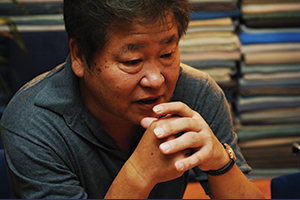 I attended the press party celebrating the opening of Takashi Sugimoto’s newest restaurant in Ebisu, Shunju Yurari, without knowing much about its background. As a novice to Shunju, the experience was still enchanting. But upon speaking with Sugimoto and seeing how his philosophy is entrenched in every detail, the pleasure of dining there becomes even more profound.
I attended the press party celebrating the opening of Takashi Sugimoto’s newest restaurant in Ebisu, Shunju Yurari, without knowing much about its background. As a novice to Shunju, the experience was still enchanting. But upon speaking with Sugimoto and seeing how his philosophy is entrenched in every detail, the pleasure of dining there becomes even more profound.
The dining space of Shunju Yurari is divided into two distinct themes. To the right of the entrance is the concept of “ripples of water,” represented by a glass partition with dollops of round droplets. Its mood is refreshing and energizing. On the left is the concept of “sunbeam streaming through the leaves of trees.” In contrast to the cool colors and glass dividers, this section is woody and earthy as ceiling lights scatter onto the slabs of wooden tables. The mood here is comforting and warm. Sugimoto’s designs are more than just pleasant visuals. His sense of hospitality is evident by creating an environment that can be relaxing or energizing.
But Sugimoto’s greatest hospitality is of course the food. The giant clam and white peach appetizer served in a fluted glass is culinary poetry. Without exaggeration, it is simply the most unforgettable dish that has met my palate. Unfortunately for readers, it is a seasonal dish available only in the summer. Shunju, with its characters meaning “spring” and “autumn,” defines itself as a seasonal kitchen, where the freshest ingredients at their prime (also called shun in Japanese) are highlighted. The summer appetizer at Shunju reminded me of the aesthetics of cherry blossom viewing where the appreciation of things seasonal and fleeting is heightened. Be assured though that every season at Shunju, patrons will be treated to the specialties of the time.
The Shunju style of cooking is often referred to as “new Japanese cuisine.” Rather than paying attention to the kaiseki balance of cooking methods, at Shunju, attention is paid to where ingredients come from and the simple preparation of the food. Vegetables then become a main course there. The charcoal grilled organic vegetables served with a warm foie gras dip is delicious and filling. Meats are grilled and served simply with Okinawan sea salt or with yuzu pepper. Unlike the tenderness of marbled meat often associated with Japanese beef, the organically fed Iwate-grown beef was selected for its firm texture. “The way beef should be,” explained one chef.
Shunju chefs go beyond meeting with farmers to discuss ingredients. They research the quality of soil in a certain region and the minerals in the waters where sea salt comes from. Sugimoto explains, “There are two types of restaurants. 95 percent are there to make money. Then there are a few restaurants that exist for the love of food.
It could be finding someone obsessed about making the best soba ever, or growing the most succulent vegetables. I wanted a restaurant that reflected a pure love of food as a craft.” This ideal produced Sugimoto’s first Shunju restaurant in a quiet Setagaya neighborhood. There are now six Shunju restaurants, all with different themes while maintaining the same basic philosophy.
Chefs at Shunju will readily elaborate on what makes an ingredient special enough to be selected for inclusion in the menu, thus regular customers know the name of the farm where certain tomatoes are grown. The bond between regular patrons and chefs is sealed by outdoor banquets held regularly. In rural settings, chefs produce an elaborate feast that celebrates both nature and the naturalness of food – the Shunju way. One should only be so lucky to be invited to this haven of fine dining.
Shunju Yurari Ebisu, Ebisu South One B1F, 1-7-8 Ebisu Minami
Shibuya, Tokyo, tel: 03-5725-7970
Story by Carol Hui
From J SELECT Magazine, November 2008

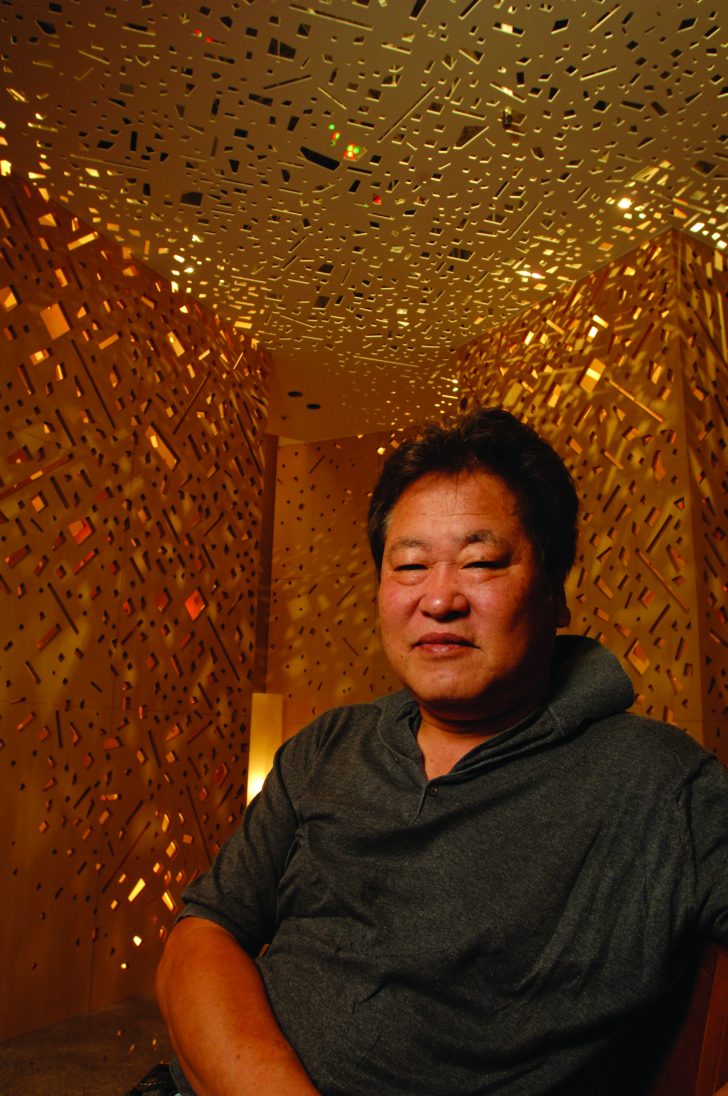

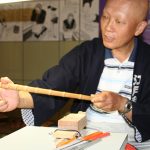


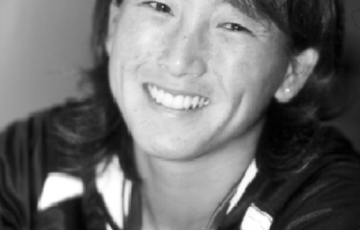



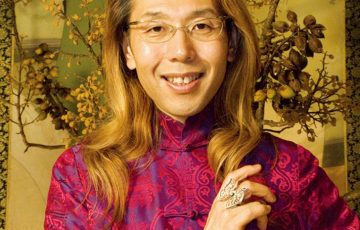




Recent Comments